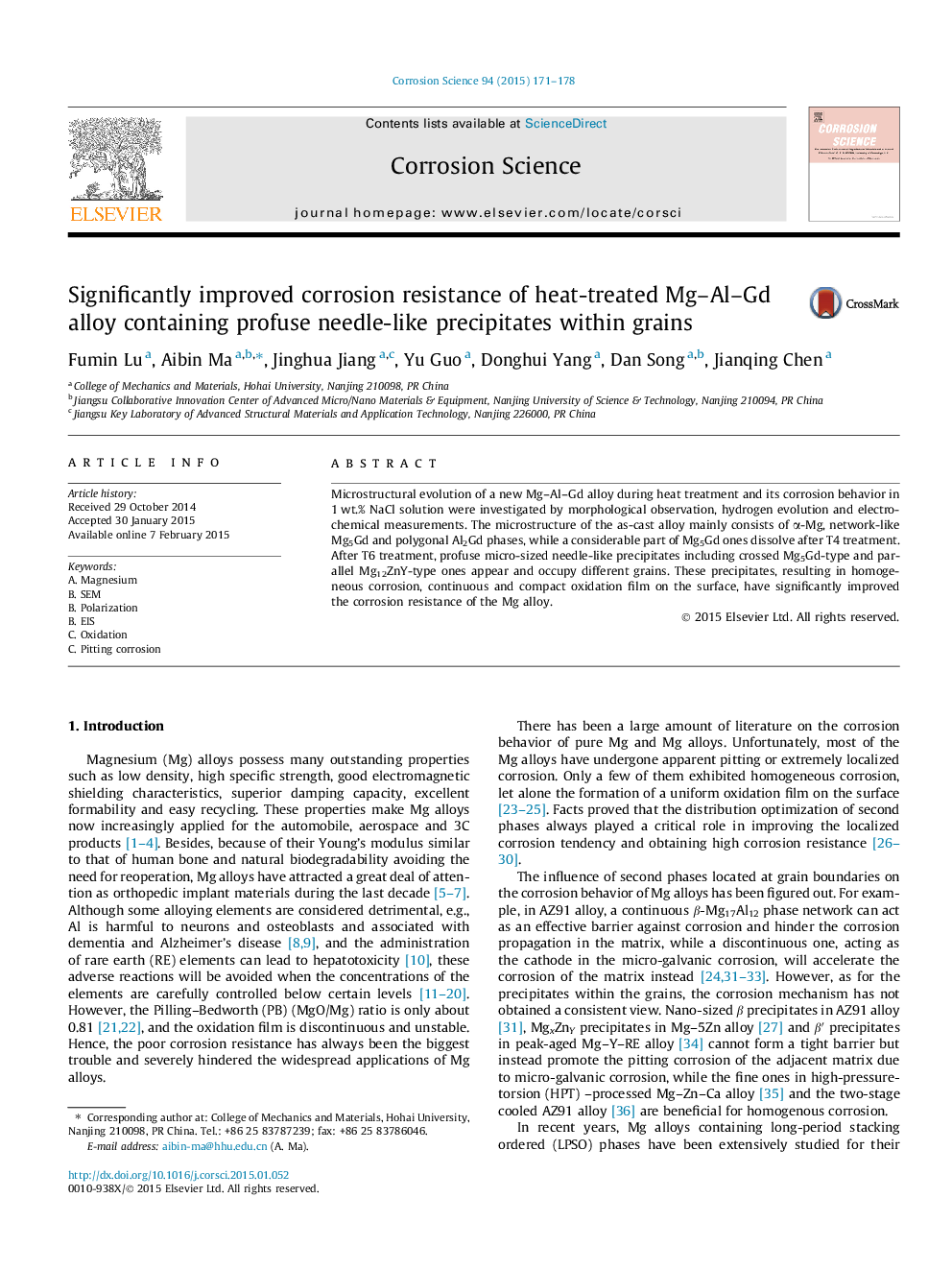| Article ID | Journal | Published Year | Pages | File Type |
|---|---|---|---|---|
| 1468633 | Corrosion Science | 2015 | 8 Pages |
•Profuse micro-sized needle-like phases precipitated in T6-treated Mg–Al–Gd alloy.•Parallel 18R LPSO phases and crossed Mg5Gd-type ones occupied different grains.•Continuous and compact oxidation film was formed on the surface of T6-treated alloy.•The corrosion resistance has been significantly improved after T6 heat treatment.•The main corrosion mechanism of T4-treated alloy is intergranular corrosion.
Microstructural evolution of a new Mg–Al–Gd alloy during heat treatment and its corrosion behavior in 1 wt.% NaCl solution were investigated by morphological observation, hydrogen evolution and electrochemical measurements. The microstructure of the as-cast alloy mainly consists of α-Mg, network-like Mg5Gd and polygonal Al2Gd phases, while a considerable part of Mg5Gd ones dissolve after T4 treatment. After T6 treatment, profuse micro-sized needle-like precipitates including crossed Mg5Gd-type and parallel Mg12ZnY-type ones appear and occupy different grains. These precipitates, resulting in homogeneous corrosion, continuous and compact oxidation film on the surface, have significantly improved the corrosion resistance of the Mg alloy.
